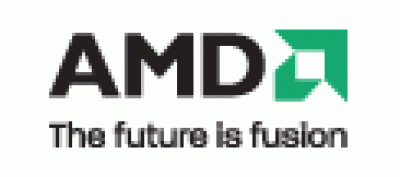AMD Grows At Intel Expense Thanks To Fusion Chips

AMD’s market share of the x86 space rose almost two points, although Intel still dominates the sector
Advanced Micro Devices slowly chipped away at Intel’s dominance in the global x86 processor space during the second quarter, according to new research.
Market research firm Mercury Research found that AMD’s market share jumped to 19.4 percent on the strength of its Fusion chips.
AMD’s market share jumped from 17.8 percent in the second quarter of 2010 and 18.2 percent in the first quarter this year, according to Mercury’s numbers, which were released 28 July. Most of that growth came at the expense of Intel, which saw its market share drop to 79.9 percent.
Fusion Growth
That compares with 81.3 percent in the second quarter last year, an 81 percent in the first quarter of 2011. For its part, Via Technologies saw its market share stay stead, at 0.8 percent. The company garnered 0.9 percent of the market both in the second quarter of 2010 and the first quarter this year.
 Dean McCarron, principal analyst at Mercury, said it was down to AMDs Fusion chips – particularly the Fusion C-Series “Ontario” chips for smaller PCs and the newer A-Series “Llano” processors for mainstream systems.
Dean McCarron, principal analyst at Mercury, said it was down to AMDs Fusion chips – particularly the Fusion C-Series “Ontario” chips for smaller PCs and the newer A-Series “Llano” processors for mainstream systems.
“Together these devices allowed AMD to increase shipments in the mobile market by 10 percent, and enabled the company to out-ship the competition and gain market share in the second quarter,” McCarron said in a statement.
AMD at the 2011 Consumer Electronics Show in January released the first of its much-anticipated Fusion chips – or APUs (accelerated processing units), as AMD calls them – which integrate the CPU and high-level graphics capabilities on the same piece of silicon. AMD officials tout the architecture as offering greater performance while driving down power consumption.
A host of systems makers – including Hewlett-Packard, Dell, Lenovo and Acer – are rolling out new PCs powered by Llano, which offers such features as AMD’s AllDay Power and dynamic switchable graphics for long battery life and AMD’s Turbo Core technology, which boosts the performance of the CPU and GPU based on the workloads to help improve performance and energy efficiency.
Sales Benefit
During the company’s second-quarter earnings call, CFO and interim CEO Thomas Seifert said the Fusion chips, including Llano, were ramping quickly, helping the company hit a $61 million (£37m) profit during the three-month period.
“The success of the APUs demonstrates that we have the right strategy,” Seifert said on a conference call with journalists and analysts.
The APUs account for about 70 percent of notebook chip shipments and revenues, AMD officials said. They also represent about 40 percent of all AMD chips sold.
For its part, Intel is seeing strong adoption of the “Sandy Bridge” Core i3, i5 and i7 processors that also first appeared at CES in January, and also offer integrated graphics and CPUs on the same chip.
During their second-quarter earnings call, Intel officials said the Sandy Bridge chips saw the fastest ramp of any product in the company’s history, and will account for two-thirds of the Intel chips that will be sold this year.